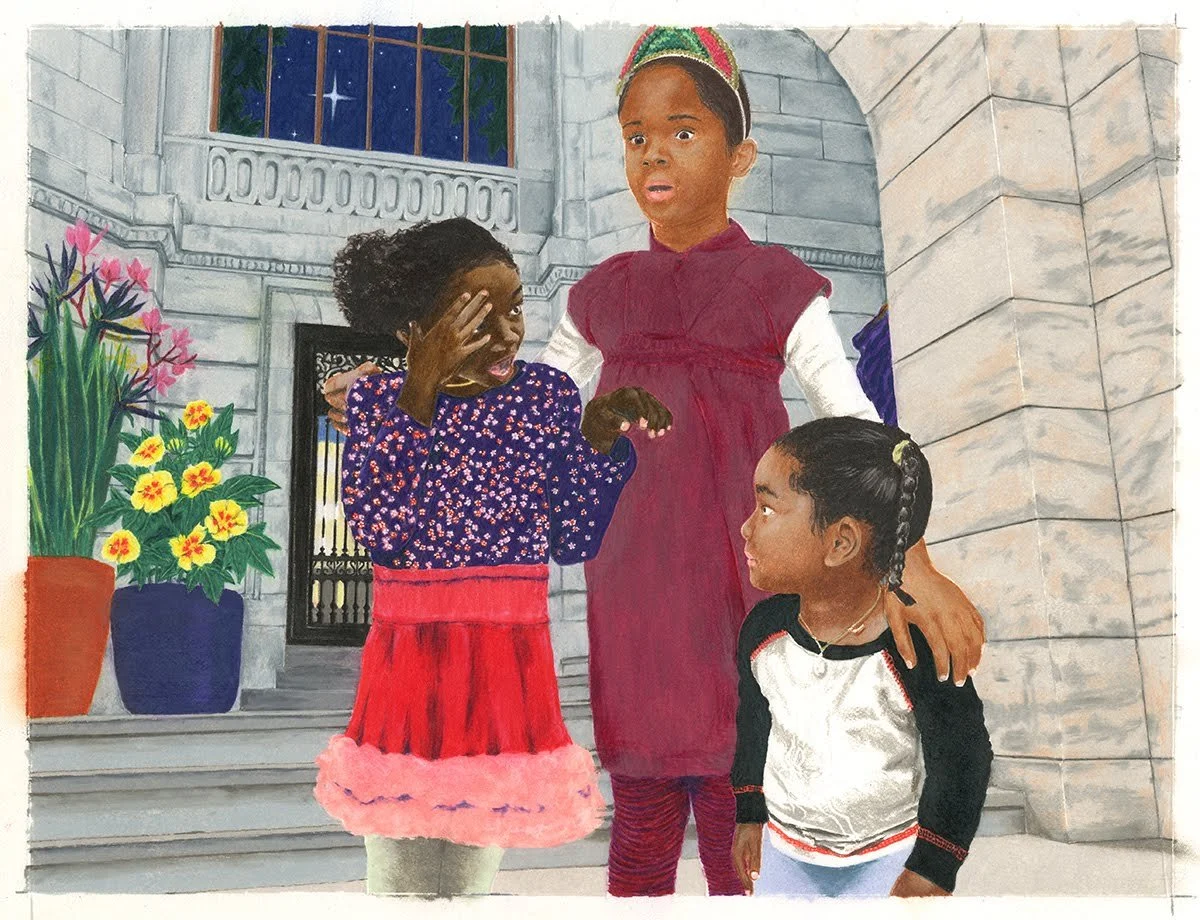The Sound and the Silence of Dreams
I was made speechless yesterday by the strange connective tissue that exists between horror and the sublime. I sat at my desk and read, for the first time, The Party: A Mystery by Jamaica Kincaid, with illustrations by Ricardo Cortés.
The story immediately captivated my unapologetic Cinderella complex. Three girls find themselves in a palatial museum, eavesdropping on a resplendent gala. The architecture is extraordinary, and the girls’ eyes widen as they admire the dresses and cakes of the upper class.
As the story continues, things become more complicated for these partygoers. Two of the girls witness something. Or realize something.
Something.
The “something” is never disclosed, and when we arrive at the end of the book, we immediately find ourselves turning back the pages and trying to solve the mystery for ourselves. The illustrations unfurl their elegance all over again, but this time, we are left with an intuition that the girls’ horror is of the existential kind. Something has shaken these little ones, and they are at a loss for words.
This strange silence infuriates the smallest girl who begs for words. The older girls never tell her. It’s as if they want to protect her, just a little longer, from a realization that has suddenly and decidedly dashed their girlish dreams.
Kincaid and Cortés have so much to say, and it is their silence that says the most.
I could try to go on here, but writer Gabrielle Bellot does such a better job of describing the mysterious power of this book than I can. Read her thoughts on The Party here.
Is The Party by Jamaica Kincaid a good book for kids?
Many children will be disappointed by the deliberate untidiness of this book. Others, with a little encouragement, will enjoy probing the book’s hidden layers. At the very least, they ought to be able to relate to the rage of the littlest girl who has been excluded from the conversation, as littlest children so often are. They will also, surely, enjoy losing themselves in the powerful illustrations.
But this also makes an excellent book for older children and even, or especially, for adults. I do not think it would be too much to refer to The Party as an “art book” or as a “graphic novel.” It transcends the normative, which is precisely what makes it such a strong representation of both the uncanny and the sublime.


